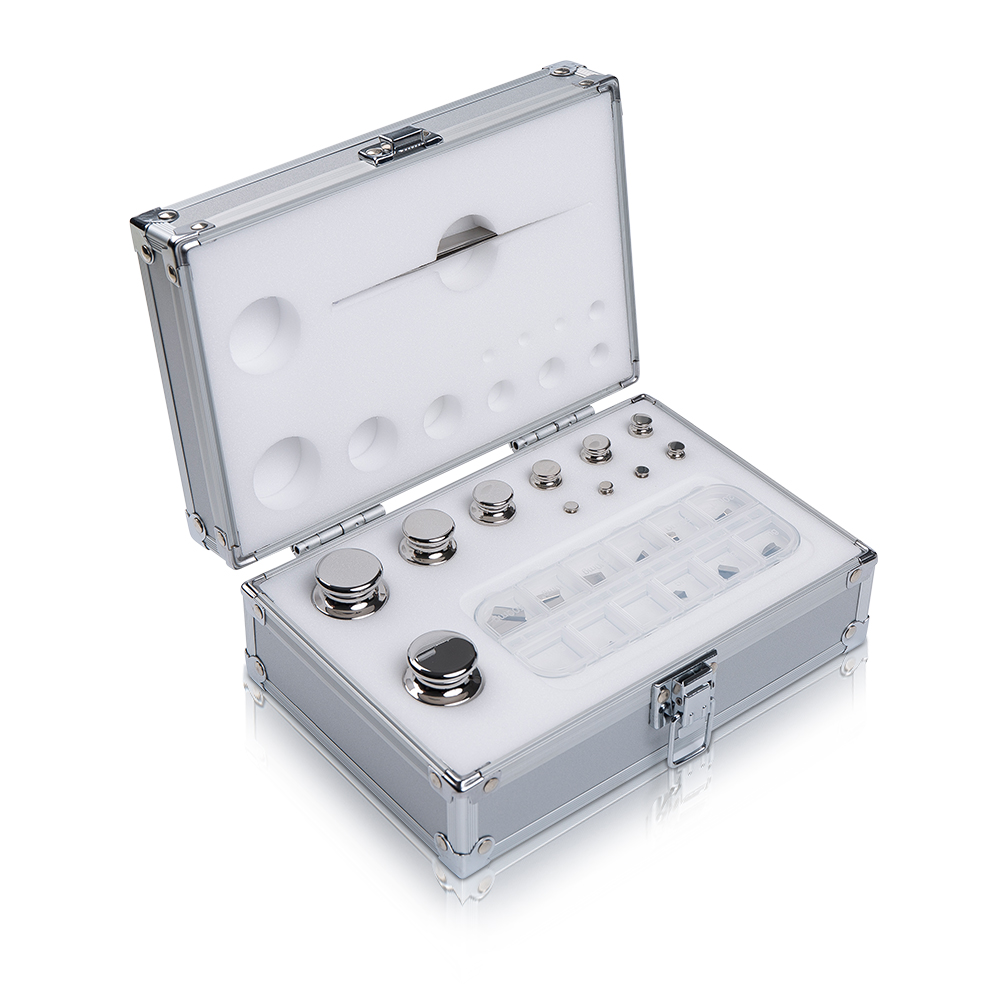To ensure that the surface of laboratory calibration weights remains free from contaminants, several important steps are taken during their manufacturing, handling, and maintenance processes. These measures are crucial because even minor contamination can affect the accuracy and precision of the weights, especially in high-precision laboratories. Here’s an outline of the steps involved:
High-Quality Materials: Calibration weights are often made from stainless steel, aluminum, or other corrosion-resistant materials that minimize the risk of surface contamination and oxidation. These materials are chosen for their stability and resistance to environmental factors.Polished Finish: The surfaces of high-precision calibration weights are polished to a smooth, mirror-like finish, which reduces the likelihood of dirt, dust, or debris adhering to the surface. This minimizes potential contaminants that could affect weight accuracy.
Cleanroom Manufacturing: Weights are typically produced in controlled environments, such as cleanrooms, to prevent contamination during manufacturing. The controlled environment ensures that particles or debris do not settle on the weights during production.
Protective Cases: Calibration weights are stored in protective cases made from materials like plastic, wood, or metal to prevent exposure to dust, moisture, and other contaminants. These cases often have foam inserts to cradle each weight and prevent movement that could cause surface damage.Sealed Packaging: Weights are often packaged in sealed containers or bags during transport to ensure they remain clean and free from contaminants. Sealed packaging prevents contact with airborne particles, oils, or humidity.
Use of Gloves or Tweezers: Laboratory personnel handling calibration weights are typically required to wear gloves (cotton or latex) or use tweezers to avoid direct contact with the weights. Skin oils, sweat, and dirt from fingers can contaminate the surface and introduce measurement errors.Handling Weights with Tools: Special tools, such as tweezers or forceps, are used to lift and place weights during calibration procedures, especially for high-precision weights. This avoids direct contact with the surface and reduces contamination risk.

Avoiding Contact with Hard Surfaces: Weights should be placed on clean, soft surfaces (such as weight cushions or cloths) to avoid scratches or debris that could affect their accuracy.
Gentle Cleaning Methods: Weights can be cleaned using soft, lint-free cloths or brushes to gently remove dust or particles from the surface without causing damage. In some cases, a soft brush with isopropyl alcohol may be used for more thorough cleaning.Cleaning Solvents: If contamination occurs, light solvents (such as isopropyl alcohol) are used to clean the weights without leaving residues. The solvents must evaporate completely, leaving no residual substances on the weight's surface.Avoiding Abrasive Materials: Abrasive cleaning materials or harsh chemicals are avoided because they can damage the surface finish, which can alter the weight’s mass and surface integrity.
Clean Calibration Rooms: Weights are stored and used in clean, controlled environments to minimize exposure to dust and contaminants. Air filtration systems and humidity controls are used to ensure the room remains free of particles that could settle on the weights.Humidity and Temperature Regulation: Weights are kept in environments with stable humidity and temperature levels to avoid condensation, corrosion, or oxidation. Fluctuations in these conditions can lead to surface damage or contamination over time.
Visual Inspections: Weights are regularly inspected for signs of contamination, wear, or surface damage. Any marks, scratches, or residues can affect the accuracy of the weights, so regular visual checks are essential.Surface Re-polishing: If weights are damaged or contaminated, they can be sent to a specialized facility for re-polishing to restore their original finish and accuracy. This service is typically reserved for high-precision weights.
No Contact with Corrosive Substances: Calibration weights should be stored away from corrosive chemicals or substances that could damage the surface. Even small amounts of acids or alkalis can react with the material, altering the weight or introducing surface imperfections.Separation from Other Equipment: Weights are kept separate from other laboratory equipment, particularly items that may emit fumes, dust, or other contaminants that could settle on the weight surfaces.
By following these steps, laboratories ensure that the calibration weights remain free from contaminants, preserving their accuracy and reliability for precision measurements. Proper handling, storage, and periodic maintenance are essential for maintaining the integrity of these crucial instruments.

 English
English















